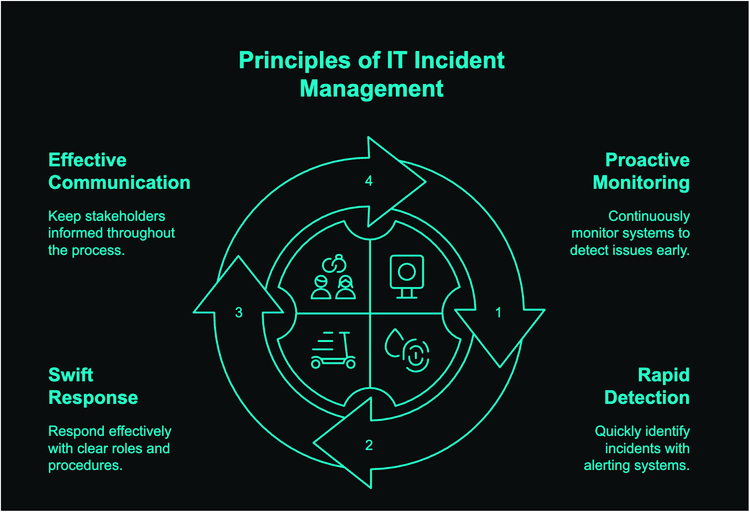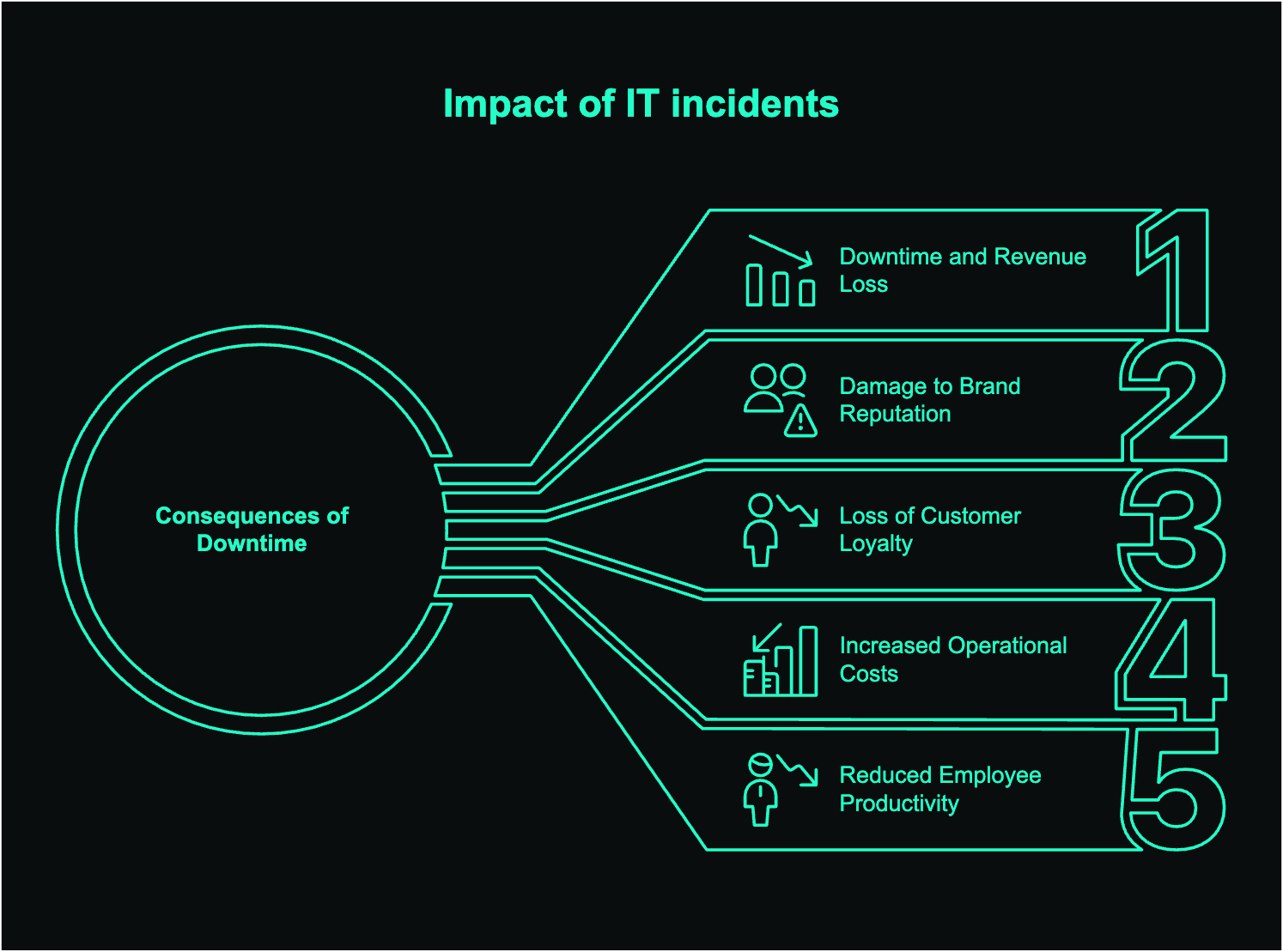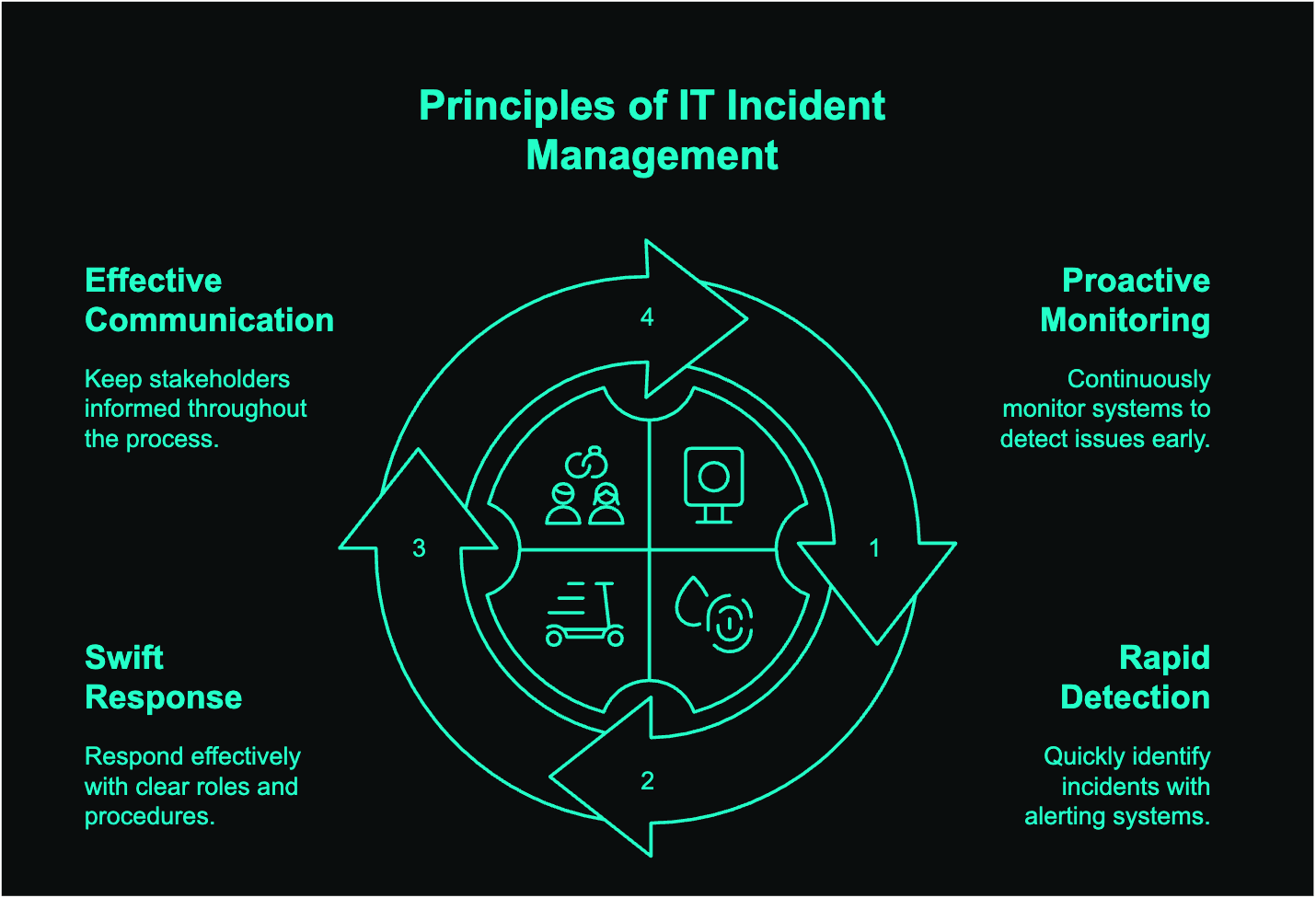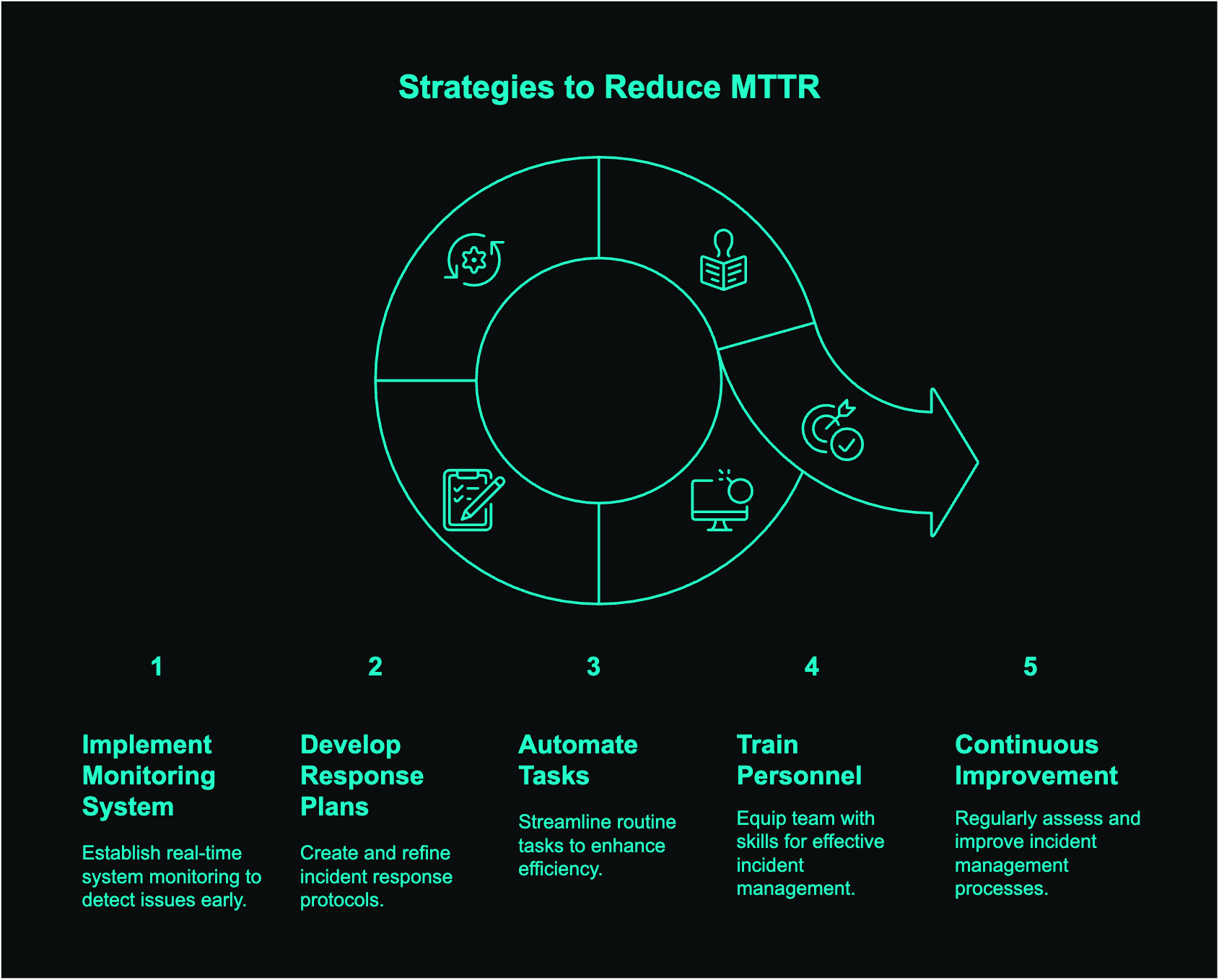IT Incident Management: Best Practices to Reduce MTTR

As a leading uptime monitoring solution, we understand that IT incidents are unplanned interruptions to services that affect business operations. These incidents can range from minor system glitches to major service outages, making uptime website monitoring essential.
IT incidents, such as server malfunctions, application failures, data security breaches, and network connectivity disruptions, can disrupt operations, damage brand reputation, and result in financial losses. To mitigate the impact of these incidents, it is essential for businesses to implement effective IT Incident Management practices.
Understanding IT Incidents
IT incidents are defined as unplanned interruptions to IT services that affect business operations. These incidents can range from minor system glitches to major service outages, and each varies in severity and impact.
The Impact of Incidents

Downtime and Revenue Loss
Service interruptions can directly impact revenue generation, particularly for businesses that rely on online transactions. This is a clear consequence of system unavailability.
Damage to Brand Reputation
Extended downtime can undermine customer trust and negatively impact a company's brand reputation. Regaining customer confidence after such issues is often difficult.
Loss of Customer Loyalty
Service disruptions can result in customer frustration and churn, which can impede long-term business growth. Ensuring service reliability can promote customer loyalty.
Increased Operational Costs
Incident response and recovery can incur substantial costs, including overtime pay for IT personnel, loss of productivity, and potential fines for non-compliance.
Reduced Employee Productivity
IT incidents can disrupt workflows, which in turn reduces employee productivity and morale, and impacts the overall efficiency of the organization.
Core Principles of IT Incident Management

Effective IT Incident Management is grounded in several essential principles:
Proactive Monitoring:
Continuous monitoring of IT systems for potential issues, using tools like Bubobot, is essential. Proactive monitoring enables the early detection of problems, which facilitates quicker responses and reduced impact. This approach also ensures continuous system stability.
Rapid Detection
The implementation of robust alerting systems is essential to ensure IT teams are promptly notified of any incidents. This enables a swift response and minimizes the time to identify and address issues, which is very important.
Swift Response
Establishing clear communication channels and response procedures is crucial. Clearly defined roles and responsibilities within the IT team ensure that everyone is aware of their function during an incident.
Effective Communication:
Maintaining clear communication throughout the incident response process is essential. Stakeholders should be kept informed about the situation and progress towards resolution, to keep everyone in the loop.
Strategies to Reduce MTTR

A primary objective of IT Incident Management is to minimize Mean Time To Resolution (MTTR), which is the average time taken to restore a service to its normal operational state following an incident. The following strategies can be used to reduce MTTR:
Implement a Robust Monitoring System
Utilizing tools such as Bubobot enables real-time monitoring of your IT systems. Bubobot’s customizable alert system prioritizes critical issues and sends targeted notifications, enabling your team to respond quickly and effectively.
Develop Clear Incident Response Plans
Creating detailed documented procedures for incident response, including defined roles, responsibilities, escalation paths, and communication protocols, is critical. Conducting regular drills to test and refine these plans helps ensure their effectiveness and efficiency.
Automate Repetitive Tasks
Automating routine tasks, such as restarting services or running diagnostics, can help to speed up incident resolution and allow more focus on key areas.
Invest in Training and Education
Providing comprehensive training to IT personnel on incident response procedures, troubleshooting techniques, and the use of relevant tools, is key. This helps to empower your team with the skills necessary to resolve problems.
Foster a Culture of Continuous Improvement
Regularly reviewing incident response processes and gathering feedback from team members can help improve effectiveness. This enables ongoing refinement of procedures and tools.
Selecting the Right Tools
Choosing appropriate tools is crucial for effective incident management. A free uptime monitoring solution offers:
- Enable Incident Tracking: Facilitate the tracking and resolution of incidents throughout their lifecycle. This improves transparency and ensures that no aspect of any incident is missed.
- Integrate with Monitoring Tools: Seamlessly integrate with your existing monitoring systems to offer a unified perspective of incidents and their impact. This allows you to have a more comprehensive view of incidents across various platforms.
- Offer Automation Capabilities: Automate repetitive tasks to streamline the incident response process. This not only speeds up processes but also allows for more focus on key aspects.
- Provide Robust Reporting and Analytics: Generate reports on incident trends, identify areas for improvement, and demonstrate the effectiveness of your incident management processes. This data is crucial for informed decision-making.
Bubobot offers comprehensive uptime monitoring capabilities that can substantially enhance your incident management strategy. Through real-time monitoring capabilities, customizable alerts, and scalable solutions, Bubobot proactively identifies and addresses potential issues.
Conclusion
Effective IT Incident Management is essential for minimizing the impact of IT issues on business operations. By implementing the best practices outlined above, and utilizing tools such as Bubobot, you can reduce MTTR, improve service availability, and enhance the overall resilience of your IT infrastructure.